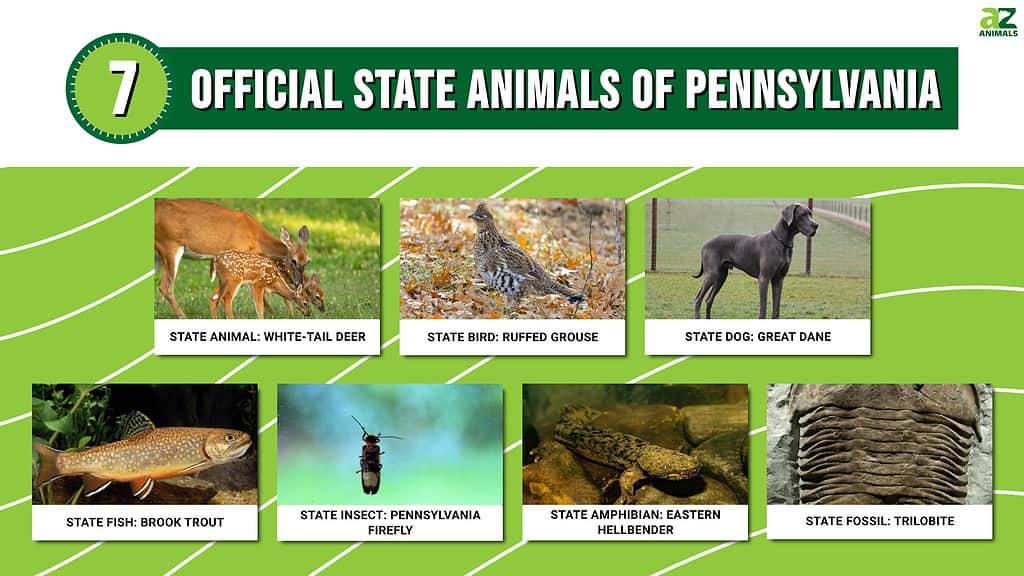
Most states in the United States have adopted an official state animal. Many go further than that, though. Along with an official state animal, many states recognize additional classifications, such as the state bird, fish, insect, etc. Pennsylvania has done just that. Here is a list of the seven official animal symbols of the Keystone State.
1. State Animal: White-Tail Deer
The white-tail deer (Odocoileus virginianus) was named the official state animal of Pennsylvania in 1959. This deer is the most popular official state animal in the nation. Along with Pennsylvania, the white-tail deer is also the official state animal in eight other states: Arkansas, Illinois, Michigan, Mississippi, Nebraska, New Hampshire, Ohio, and South Carolina. In addition, the white-tail deer is also the wildlife symbol of Wisconsin, the official mammal of Georgia (along with the right whale), and the official game animal of Oklahoma.
It’s not surprising that so many states, including Pennsylvania, would recognize the deer’s importance and symbolism. The white-tail deer is the most common deer species in the world. They proliferate throughout the United States. In Pennsylvania, the white-tail deer was essential to both Native Americans and settlers. It provided a reliable food source. Clothing and shelter were made from the deer’s hide, along with weapons and tools that were fashioned from its antlers.
Today, the population of white-tail deer in Pennsylvania is estimated to be 1.5 million, or about 30 deer per square mile in the state.
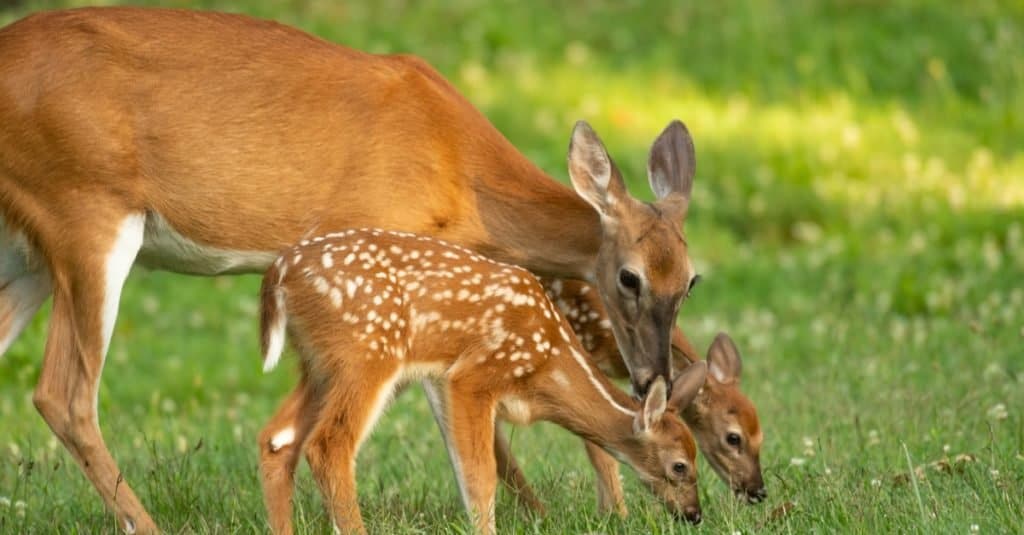
A white-tail doe will birth 1-3 fawns each year.
©Tony Campbell/Shutterstock.com
2. State Bird: Ruffed Grouse
The ruffed grouse (Bonasa umbellus) was recognized as Pennsylvania’s state bird in 1931. This reddish-brown bird’s name derives from the black “ruffs” on its neck.
Also known as the partridge, the ruffed grouse is one of 10 grouse species native to North America. These gallinaceous birds are related to quail, pheasants, and turkeys, but they are far more resistant than many of their relatives. The ruffed grouse can survive cold and snowy winter conditions that would kill many of their avian counterparts.
The ruffed grouse’s presence, especially in the cold winter months, made the bird an invaluable food source for Pennsylvania settlers. When other food was scarce, these plentiful birds were lifesavers for early Pennsylvanians.
Today, the ruffed grouse is far fewer in number than in the past. In 2018, mosquitos carrying the West Nile virus had a devastating impact on Pennsylvania’s ruffed grouse population. Hunters and conservationists were wondering if the official bird of Pennsylvania might even be extirpated from the state.
Thankfully, due to a reduced hunting season and aggressive habitat work, ruffed grouse numbers are rebounding in the Keystone State. While it’s unlikely the population will ever return to the levels seen in the past, it seems evident the state bird of Pennsylvania is making a comeback.
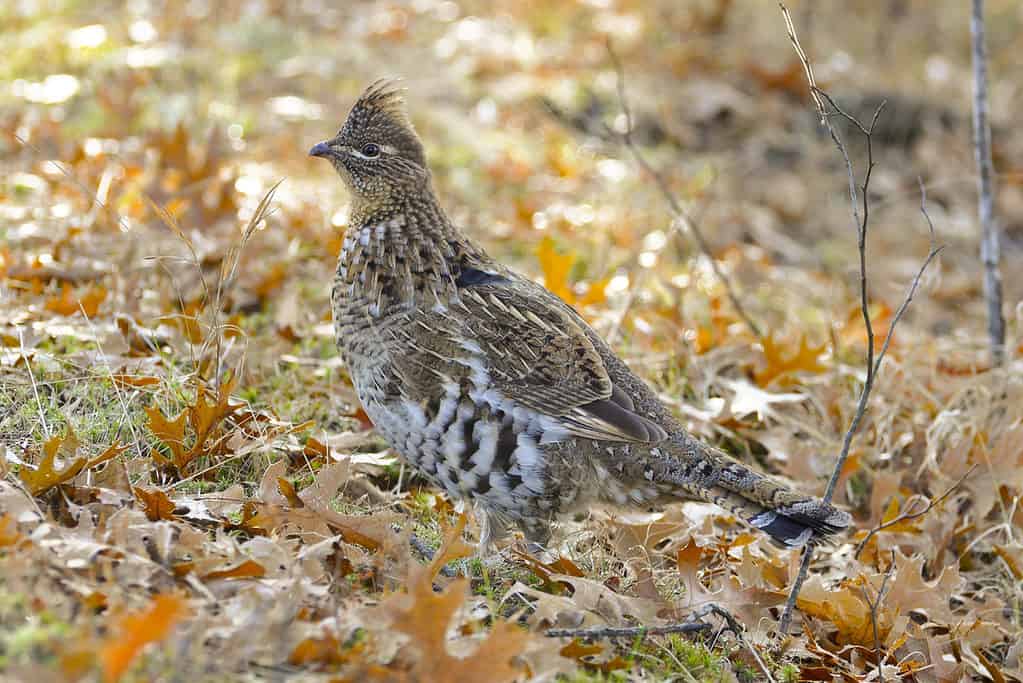
The ruffed grouse’s name is derived from the black “ruffs” on the side of its neck.
©iStock.com/SteveOehlenschlager
3. State Dog: Great Dane
Thirteen states have named an official state dog. Pennsylvania was the second state to do so, designating the Great Dane (Canis lupus familiaris) as the official state dog in 1965.
Reasons for this selection were noted in the official 1965 declaration. The declaration states that the Great Dane’s “size, strength, beauty, intelligence, tolerance, courage, faithfulness, trustworthiness and stability exemplify those of Pennsylvania.”
It was also noted that the Great Dane started as a hunting breed but also became a working breed, drawing parallels to the hunts of early Pennsylvanians and the state’s later industrialization.
It is even noted in the official declaration that the shape of the Great Dane’s head resembles the outline of Pennsylvania’s boundaries. Some may see that as a bit of a stretch, but it made it into the official state record.
Perhaps most notably, William Penn, founder of Pennsylvania, owned a Great Dane himself. A portrait by Pennsylvania artist Violet Oakley depicting Penn and his beloved Great Dane hangs in the governor’s Reception Room in the Pennsylvania Capitol today.
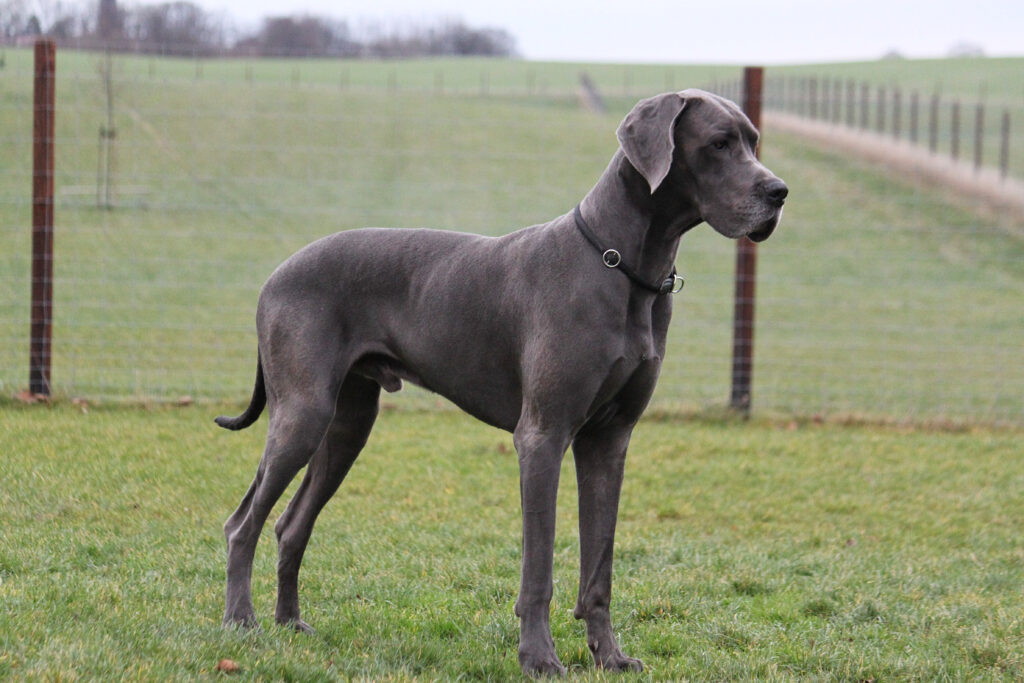
The Great Dane started as a hunting breed but also became a working breed.
©iStock.com/Credit:BiancaGrueneberg
4. State Fish: Brook Trout
The brook trout (Salvelinus fontinalis) is the official fish for nine states. Along with Pennsylvania, the “brookie” is the state fish in Michigan, New Hampshire, New Jersey, New York, North Carolina, Vermont, Virginia, and West Virginia. It is the most common state fish in the nation, but its popularity is not confined to the U.S. borders. The United States’ neighbor to the north also recognizes this fish. The brook trout is the provincial fish of Nova Scotia, Canada.
The brook trout was designated the official state fish of Pennsylvania in 1970. The declaration noted that the fish is quite tasty, remarking it is “a choice of most epicures.” Along with being loved by foodies, the 1970 declaration noted that the brook trout is the only trout native to Pennsylvania.
Interestingly, the brook trout’s name is a bit of a monomer. It’s actually not a trout but rather a member of the salmon family. The fish’s native range runs through eastern North America, and it is among the most popular sport fish in those regions, especially with fly fishing anglers.
A typical Pennsylvania brook trout measures 10-16 inches and weighs 2-3 pounds.Vonada Ranck caught the state record brook trout in 1996. Ranck pulled the 22-inch, 7-pound monster brookie out of Clinton County’s Fishing Creek in central Pennsylvania.
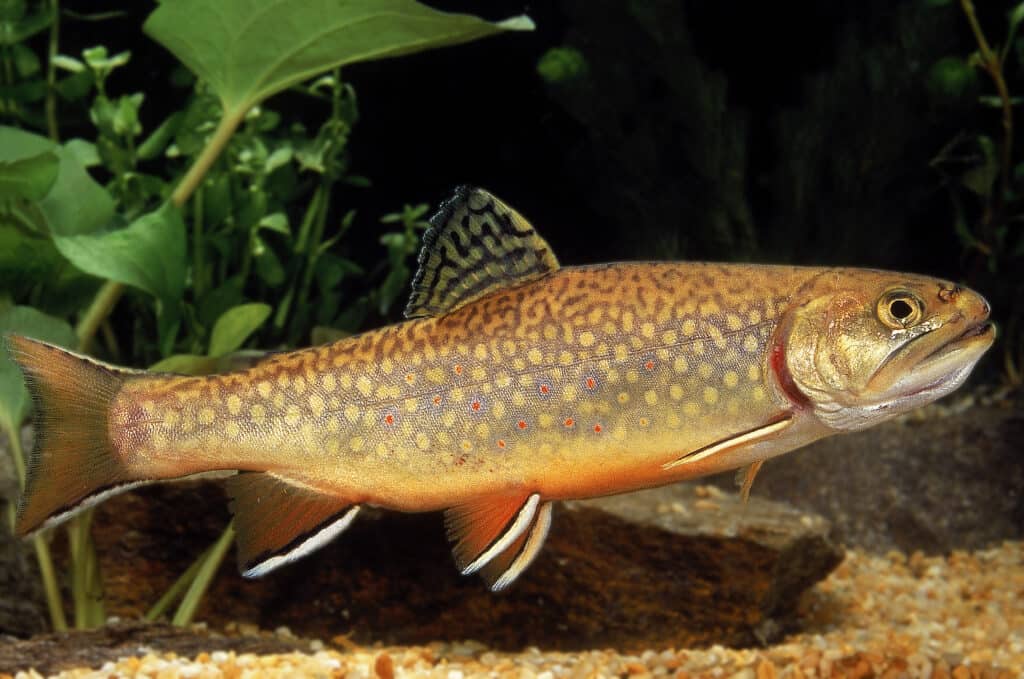
The brook trout is the official fish in nine states, including Pennsylvania.
©Slowmotion GLI/Shutterstock.com
5. State Insect: Pennsylvania Firefly
All but two U.S. states have designated at least one insect as their official state insect. Iowa and Michigan are the only states without such a designation.
Pennsylvania’s state insect is the Pennsylvania firefly (Photuris pennsylvanica). Fireflies remind many of childhood summer nights spent chasing these amazing glowing insects. In fact, the childhood wonder stirred by these “lightning bugs” is the very reason they were given official recognition by Pennsylvania legislators.
A group of students from Highland Park Elementary School in Upper Darby, located east of Philadelphia, lobbied state legislators to make an official designation regarding the Pennsylvania firefly. They reasoned that, if an insect is named after the state, it should obviously be named the official state insect!
These young students created bumpers stickers and circulated petitions, drumming up public support for the legislation. Their voices were heard. In 1974, Governor Milton J. Shapp signed the bill that officially named the Pennsylvania firefly as the state insect.
The following year, Tennessee also named the firefly as one of its four state insects. The most common firefly in Tennessee is not the Pennsylvania firefly, but rather the common eastern firefly (Photinus pyralis).
Regardless of the species, both Pennsylvania and Tennessee legislators have recognized the childlike wonder imparted by these bioluminescent beetles.

A close-up view of the underside of Pennsylvania Firefly.
©iStock.com/JJPaden
6. State Amphibian: Eastern Hellbender
There are 27 states with at least one official state amphibian. The eastern hellbender (Cryptobranchus alleganiensis) received the designation as Pennsylvania’s state amphibian in 2019.
What Is an Eastern Hellbender?
The hellbender is the largest amphibian in North America, growing up to two feet in length. It is a fully aquatic giant salamander native to the eastern and central United States and is the only living member of the Cryptobranchus genus. The genus name comes from ancient Greek, meaning “hidden gill.” It speaks to the hellbender’s method of respiration. The amphibian doesn’t have gills but rather draws in oxygen through capillaries in the frills of skin along its sides.
The common name, hellbender, has unknown origins, but it likely has something to do with the amphibian’s rather unattractive appearance. One theory mentioned by the Missouri Department of Conservation states, “The hellbender was named by settlers who thought ‘it was a creature from hell where it’s bent on returning.’”
Other unfortunate nicknames bestowed on this amphibian include “mud dog,” “mud devil,” “devil dog,” and even “snot otter!”
Why Is the Eastern Hellbender the State Amphibian?
Clearly, very few people see this creature as cute and cuddly, so why would Pennsylvania declare the hellbender an official state symbol?
While hellbenders won’t win any beauty pageants, they are important to their ecosystems as both predators of insects and small aquatic creatures and prey to fish such as trout and smallmouth bass.
These slimy creatures are also bioindicators of a water system’s health. Hellbenders require exceptionally cold, clean water. When warm, polluted water is introduced into a stream, hellbenders will vacate. The presence of hellbenders on the rocky bottoms of a stream is a natural indicator that the waterway is clean and pure. Thus, hellbenders have come to symbolize efforts to preserve clean waterways.
The Pennsylvania state amphibian designation also came about through the voices of young people. Members of the Chesapeake Bay Foundation’s Student Leadership Program spearheaded the campaign to officially recognize the hellbender in Pennsylvania. The efforts paid off in 2019.
While wearing a blue t-shirt displaying the words “Hellbender Defender,” Pennsylvania Governor Tom Wolf signed Senate Bill 9 on April 23, 2019, designating the Eastern hellbender as the Commonwealth’s official state amphibian. At the signing, the governor remarked, “Today’s ceremony is about more than a declaration of an official state amphibian. It’s about reaffirming our commitment to protecting our waters in Pennsylvania.”
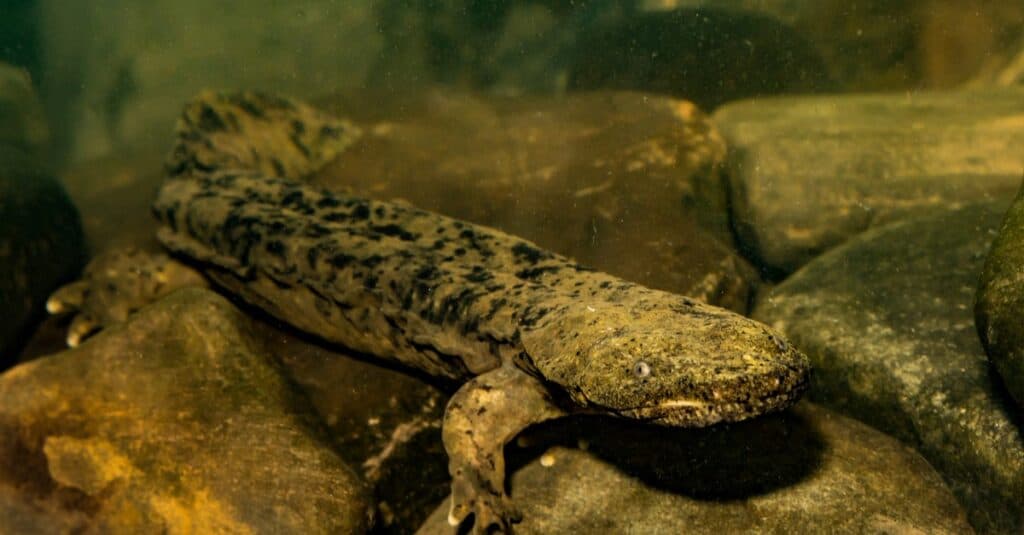
The eastern hellbender is the largest amphibian in North America, growing up to two feet in length.
©Jay Ondreicka/Shutterstock.com
7. State Fossil: Trilobite
This may seem a bit out of place in a list of Pennsylvania’s official state animals, but should we exclude an animal from the list just because it lived 250 million years ago? We say, “No!”
Why Does Pennsylvania Have a State Fossil?
The only states without an officially designated state fossil are Hawaii, Indiana, Iowa, Minnesota, New Hampshire, and Rhode Island. Pennsylvania named its state fossil in 1988, becoming the third state (along with Ohio and Wisconsin) to name the trilobite (Eldredgeops rana, formerly known as Phacops rana) as its official fossil symbol.
Hundreds of millions of years ago, Pennsylvania, along with much of the eastern U.S., was covered by a shallow sea. The sea and its coast looked very different from the eastern seaboard of the United States today, as did the creatures that inhabited it.
What Trilobites Are?
Trilobites were marine arthropods. Some swam and fed on plankton, while others were scavengers, predators, or filter feeders. The largest trilobite may have measured over 18 inches and weighed nearly 10 pounds. Modern-day relatives of trilobites include shrimps, crabs, lobsters, spiders, and insects.
Found mainly in the northeastern United States and southwestern Ontario, trilobites are perhaps the most recognizable fossils not connected to the dinosaurs. It’s estimated that dinosaurs appeared some 160 million years after trilobites. Trilobite fossils are abundant in areas such as Pennsylvania because as these prehistoric animals grew, they would molt and discard their outer skeleton. One trilobite could potentially provide 10-12 fossilized skeletons in its lifetime.
Yet again, young people led the way to achieve the trilobite’s official Pennsylvanian status. An elementary school science class campaigned for the prehistoric invertebrate to be recognized, and state legislators heard and acted.
The official legislation signed on December 5, 1988, states, “Fossils of Phacops rana are found in many parts of Pennsylvania, and, therefore, the Phacops rana is selected, designated, and adopted as the official State fossil of the Commonwealth of Pennsylvania.”

Trilobites are perhaps the most recognizable fossils not connected to the dinosaurs.
©iStock.com/markchentx
Summary of the 7 Official State Animals of Pennsylvania
Here is the list of the 7 Official State Animals of Pennsylvania:
| Rank | |
|---|---|
The photo featured at the top of this post is © Suzanne Tucker/Shutterstock.com
Thank you for reading! Have some feedback for us? Contact the AZ Animals editorial team.






